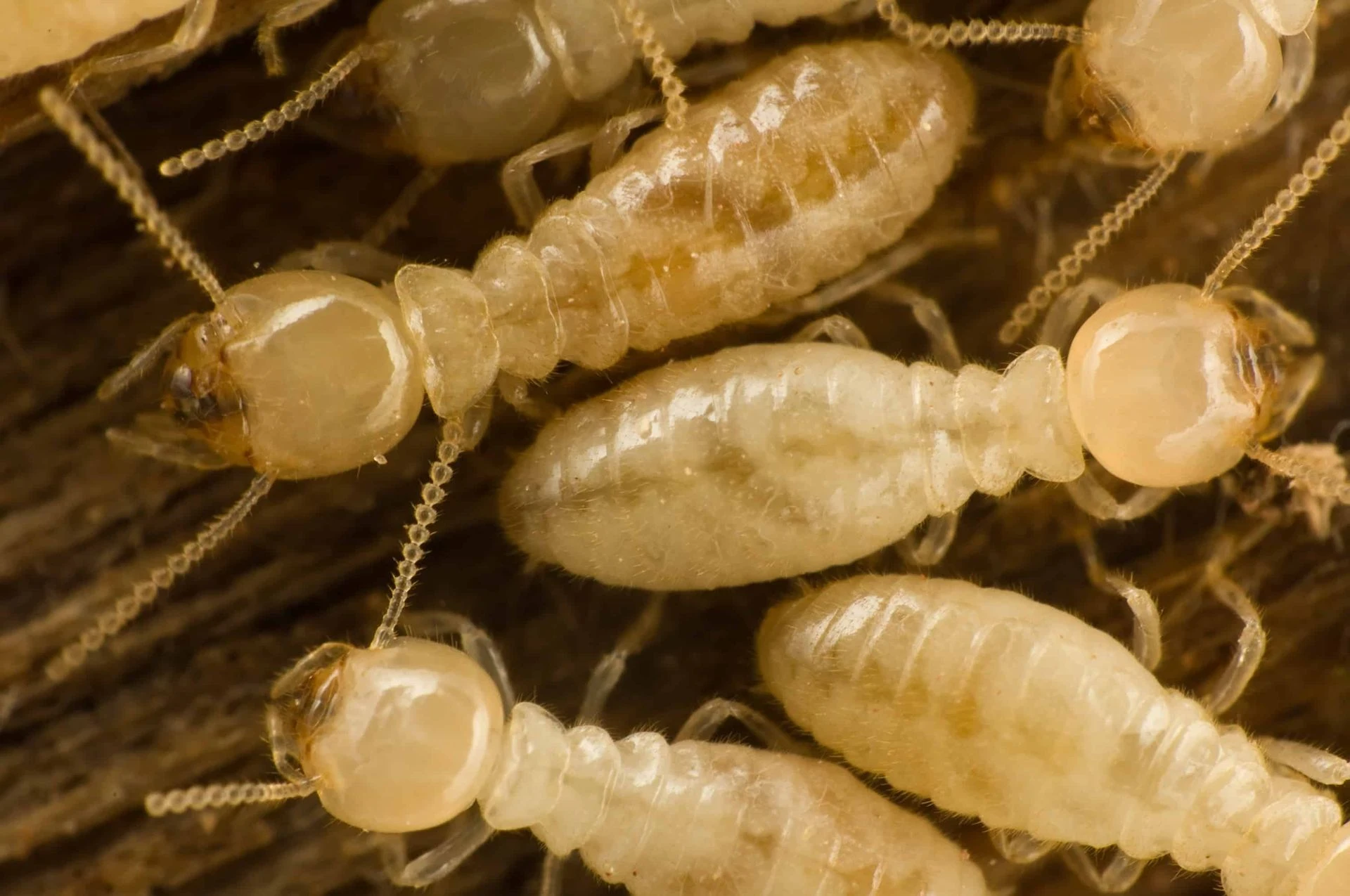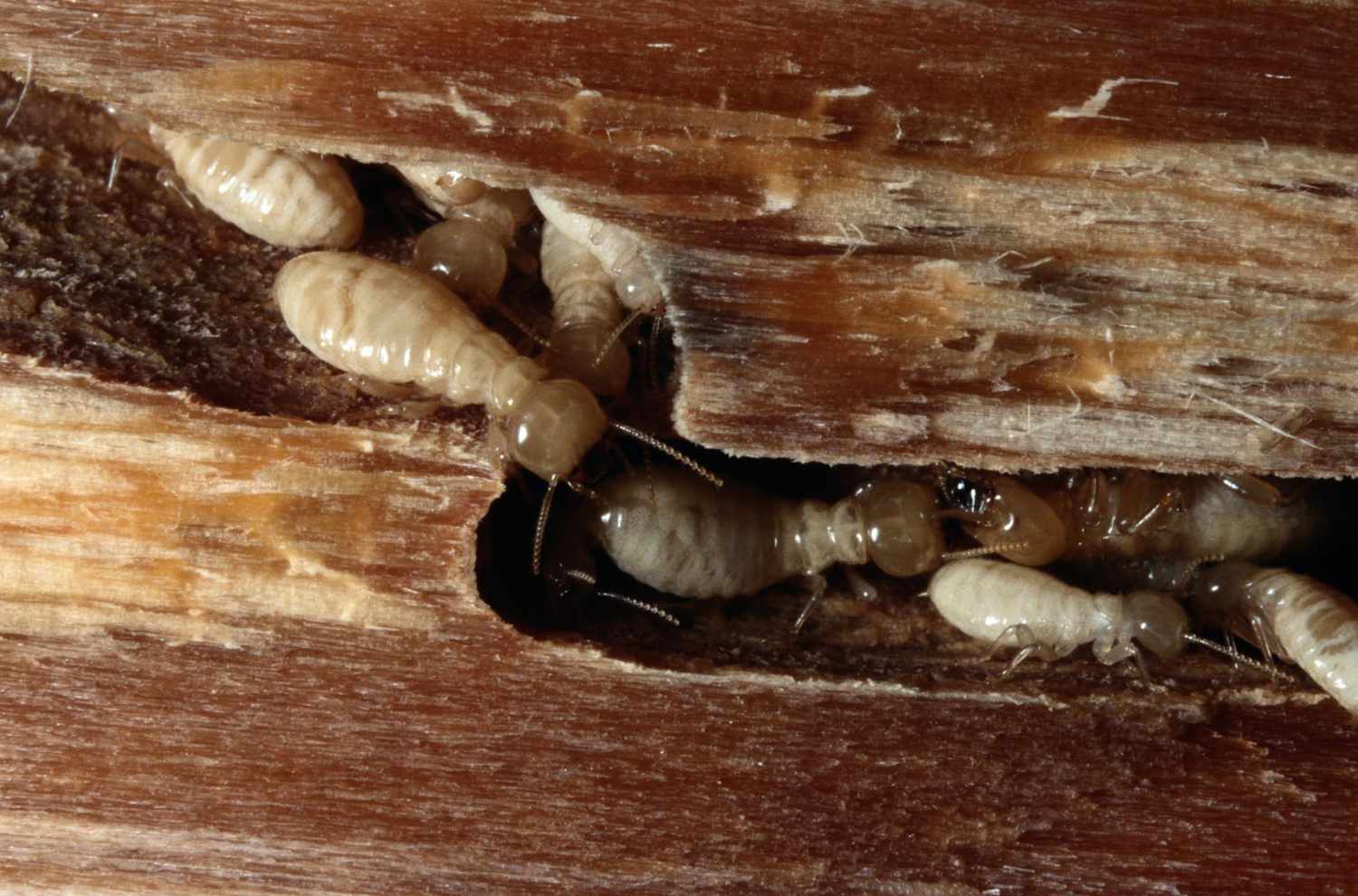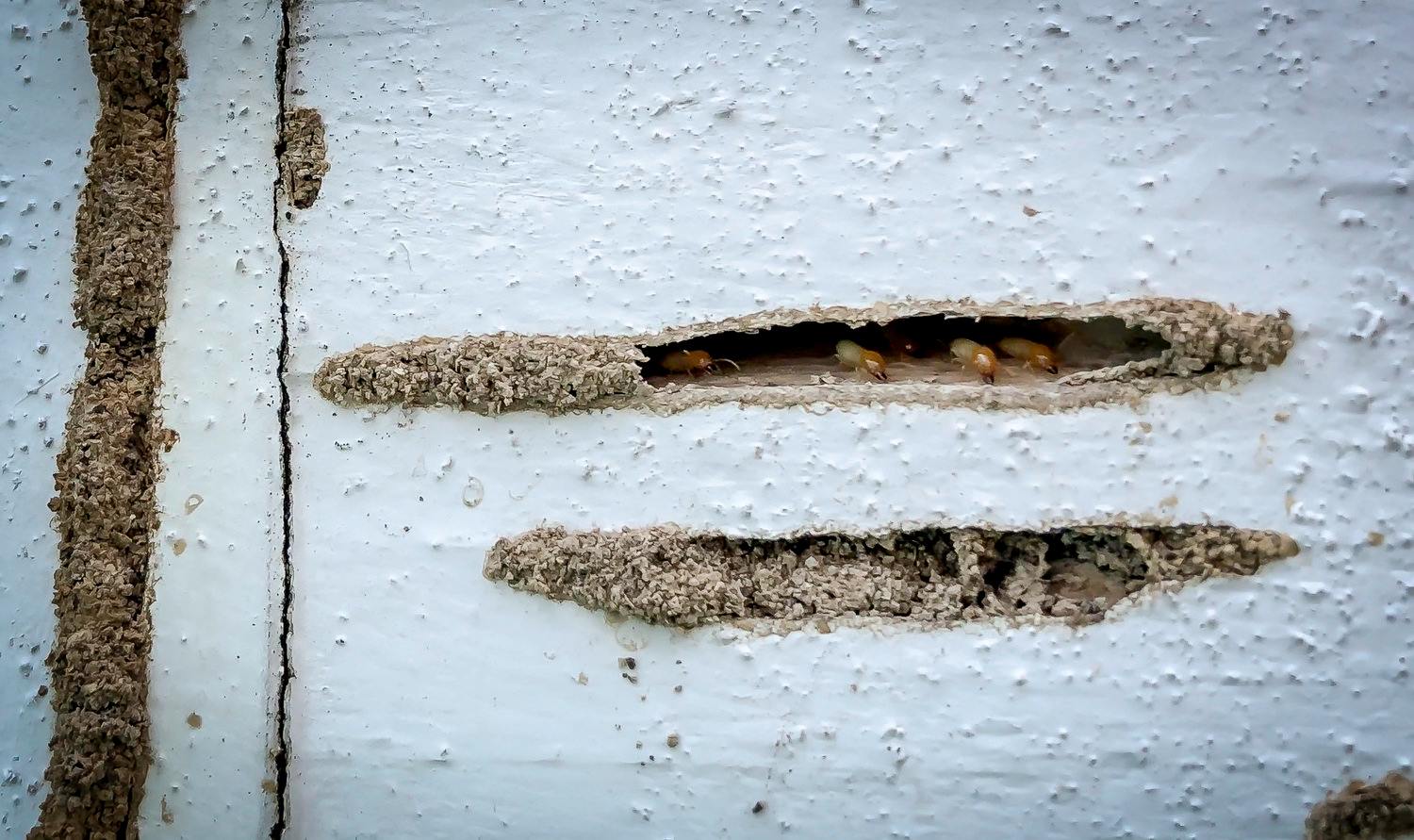Termites, also known as “Ardah” in Arabic, are insects belonging to the cockroach family and thrive in warm, humid environments. These pests are considered a serious threat to wooden structures due to their ability to feed on cellulose found in wood, causing significant structural damage. Moreover, their presence can disrupt the ecological balance, leading to soil degradation and a decline in environmental quality.
Read more about termite treatment
Termites are highly organized social insects living in colonies that consist of long-living queens responsible for laying eggs, workers who maintain the tunnels and care for the eggs and larvae, and soldiers who defend the colony from intruders. Swarmers/Reproductives who are responsible for reproduction that occurs through eggs, which hatch into larvae that develop into mature termites.
Termites primarily live underground, building intricate tunnel systems using saliva and soil. They feed on wood and plant fibers, which leads to the deterioration of wooden furniture and structures in buildings.
Termites are predominantly found in regions with warm, humid climates. It poses a significant pest control challenge due to their ability to remain hidden within wood for extended periods without being detected.
Termite Identification : What Do Termites Look Like?
Termites typically range from 2 to 5 millimeters in length. The queen is slightly larger and capable of laying thousands of eggs. Flying termites, or swarmers, have two pairs of long, transparent wings that extend beyond their bodies and exhibit an iridescent appearance in the light.
Termite Body Structure:
1. Head:
- Features compound eyes for light detection and sensory receptors for smell and touch.
- Equipped with strong mandibles used to chew through wood fibers.
2. Thorax:
- Has six legs used for movement across solid surfaces and vertical climbing.
- Some species may have wings, although they're typically short and not used for continuous flying.
3. Abdomen:
- It contains many parts that contribute to the digestive processes and chemical communication between them.
- Contains air sacs that facilitate respiration and gas exchange.
Winged termites can be distinguished from flying ants by their thick waists and wings of equal length, whereas flying ants have pinched waists and unequal wing sizes.
The appearance of termites varies depending on their caste and role within the colony.
Termite Treatment Amman Jordan
Termite castes consist of:

Workers
Maintain the colony, care for the eggs, and forage for food.

Soldiers
Defend the colony from threats.

Reproductives (Swarmers)
Responsible for mating and establishing new colonies.
What Color Are Termites?
Termite color varies by caste and species. They may appear white, brown, or black. However, worker termites are typically creamy white.
Black Termites
These are usually swarmers that have left the colony to mate and form new colonies. They are typically dark brown or black in color.
White Termites
If you notice white-colored termites in your home, they are likely worker termites. These will only be seen if you break the mud tunnels or dig through damaged wood. These termites are yellow or creamy white in color and appear very light. If you notice worker termites, their presence may indicate a termite colony invading the building.
Soldier termites may also be white or lighter in color. However, these termites differ slightly from worker termites as they have dark, orange heads.
It's also important to note that termite eggs and larvae can be white or light in color and are found within the nests themselves. Termite eggs are often transparent. Once hatched, immature termite larvae are a similar color to the eggs. As they grow, their color may change, depending on their role within the colony.
Brown Termites
Like black termites, brown termites are typically swarming. These termites may be reproductive termites or soldiers within the colony. Both tend to appear outside the nest, as their roles do not involve working inside the nest, as worker termites do. It can be difficult to distinguish between black and brown termites, as they can appear similar in color.
What Are the Common Termite Types in Jordan?
There are over 40 species of termites, but in Jordan, the three most common types are:
1. Subterranean Termites
Subterranean termites come in a wide range of colors depending on the caste they belong to. These colors can range from light cream to dark brown or black.
As its name suggests, this termite builds its nest underground in the soil. It is also the most common type of termite in Jordan.
Unfortunately, subterranean termites don't care where the wood they eat comes from, and their search often leads them into our homes and businesses. Subterranean termites infest wood by building mud tubes (or passageways) from their nests in the soil to homes where they feed on the wood structure. Seeing these mud tubes is a sign of termite activity in your home.
2. Drywood Termites
Drywood termites are usually pale brown, but can vary in color from light yellowish brown to dark brown.
These termites live inside wood and obtain the moisture they need to survive either from the wood itself or from humidity in the air. This is why drywood termites are often found in humid coastal areas.
Drywood termite colonies are much smaller than subterranean termite colonies, and a mature colony may contain only a few hundred or a few thousand. Winged males and females mate and form new colonies in a crack or other opening in the wood.
Drywood termites don't live underground, which means they can be found in a variety of places in your home. In addition to swarms, piles of feces are another sign of a drywood termite infestation. The droppings can look like sawdust or sand and are often found near windowsills and doorways. Because drywood termites don't nest in the soil, mud tubes are not a sign of their presence.
One distinguishing characteristic of drywood termites is that they eat the solid layers of wood, compared to other termite species that prefer softer layers. While this species will consume anything containing cellulose found in the wood foundation materials of a home, you can also find signs of their presence in trees and fences.
3. Dampwood Termites
Moist termites are highly destructive termites that vary in color depending on their caste.
Like subterranean termites, dampwood termites live underground. Dampwood termites are more threatening in many ways than other species. They are generally considered more aggressive when it comes to eating wood structures. They can eat anything containing cellulose, including wood structures, trees, cardboard, and paper. Dampwood termite colonies generally grow faster and are more destructive to houses.
A colony's queen can live up to 15 years, laying 2,000 eggs per day, and a mature colony can contain millions of termites. More termites means more damaged wood.
As with other types of subterranean termites, visible mud tubes are an indicator of dampwood termite activity in your home.
Where Are Termites Found in the Home?
1. Inside Wooden Structures
While it's rare to see termites outside the holes they've dug in your walls due to their constant search for cellulose, you may periodically see signs of termite presence in wooden structures. Look for mud tubes, shed wings, and piles of feces outside any small openings or tunnels in the wood. Also, look for any hollows in the surfaces of wooden structures.

2. Inside Walls
Mud tubes, small holes in walls, piles of wings, may be an indication of termite presence in your walls. Additionally, look for peeling paint or damaged wallpaper. While these signs may be caused by leaks or moisture, they could also be a sign of termites in your walls.

Contact a Professional Pest Control Company
Signs of a termite infestation can vary depending on the type of termite you're dealing with. When you notice these signs, you should contact a termite control company immediately to help you deal with the infestation professionally rather than trying ineffective home remedies. You can contact the sales team at Bash Services and schedule a free termite inspection of your home.
What Makes Bash Services Stand Out in Termite Control ?